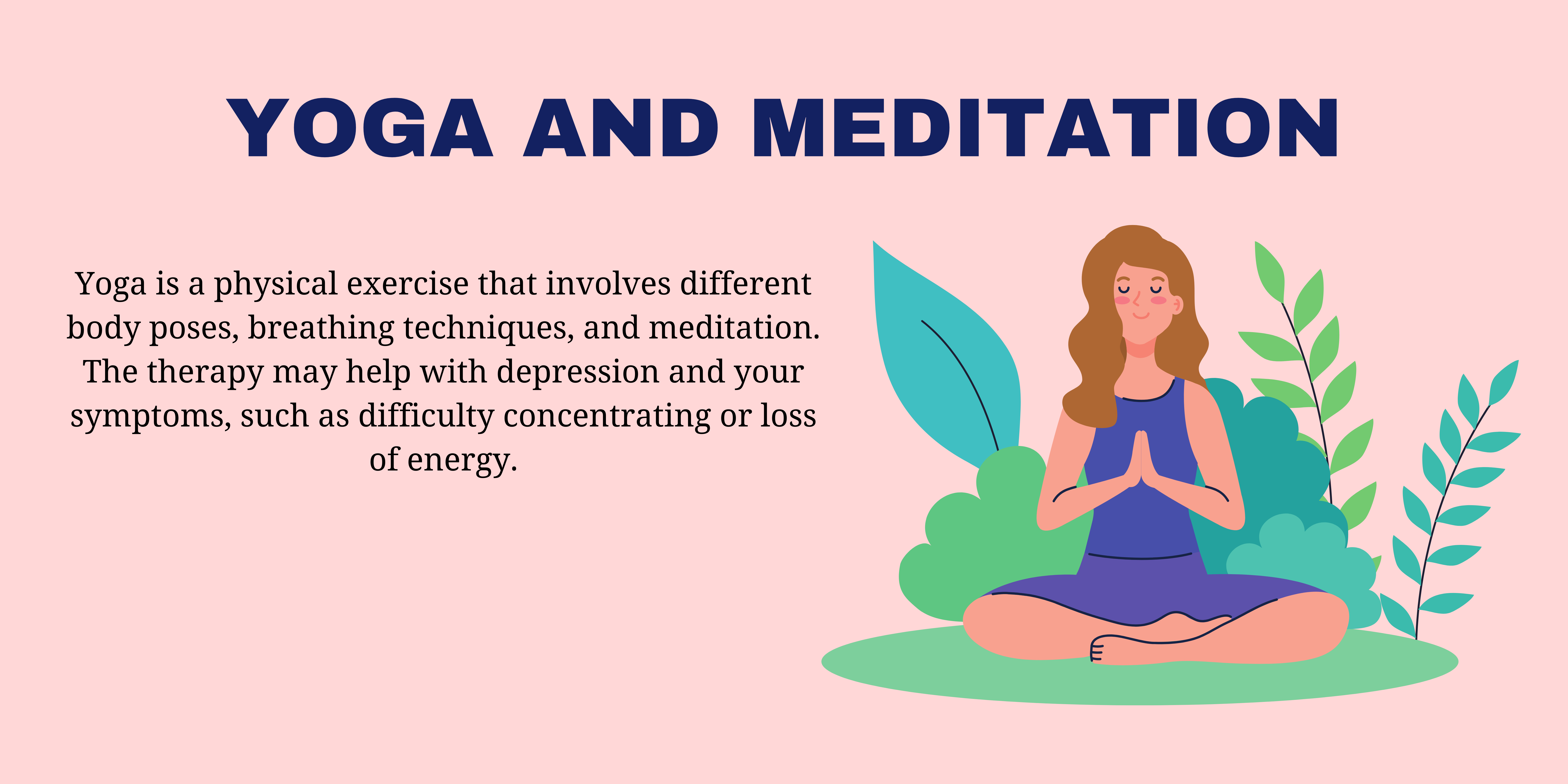YOGA AND MEDITATION

Yoga is a physical exercise that involves different body poses, breathing techniques, and meditation. The therapy may help with depression and your symptoms, such as difficulty concentrating or loss of energy.
Many people use yoga therapy to manage:
-
mental and emotional problems, such as stress, anxiety, or depression
-
conditions and disorders, such as ongoing low back pain
-
chronic or long-term pain
-
overall health and well-being
To improve mood and relaxation
Like exercise, yoga is a natural way to increase serotonin production. Serotonin production plays a role in the treatment of depression. Serotonin is believed to play a major role in happiness. Yoga is also especially helpful because of its gentle, calming, and fluid nature. Each pose is flexible, so people of all levels can practice. Your instructor will emphasize breathing, concentration, and smooth movement. They’ll also encourage you to focus on positive images to calm the body and mind.
To reduce stress and anxiety
Yoga also increases your heart rate variability (HRV), or change in time between heart beats, by increasing the relaxation response over the stress response in the body. A high HRV means that your body is better at self-monitoring or adapting, particularly to stress.
-
reduce resting heart rate
-
lower blood pressure
-
ease breathing
-
increase pain tolerance
Yoga can also:
Asana |
Description |
|---|---|
Hatha |
incorporates gentler and slower paced movements, best suited for beginners |
Vinyasa |
links breathing and movement together, pacing starts slow and gradually get faster |
Bikram |
takes place in a hot room where you practice a set series of moves to help blood flow |
Ashtanga |
focuses on quick, sequenced poses and is more physically demanding |
Hot |
is in a heated room but without set poses |
Iyengar |
uses props, such as blocks, chairs, and straps, to help you find proper body alignment |
Kundalini |
combines repetitive exercises with intense breathing for a more physically demanding exercise |
Restorative |
moves slowly through five or six poses for an hour to help you relax |
Yin |
aims to restore length and elasticity to your muscles through seated and back poses |